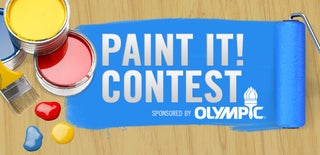Introduction: $1 DIY Conductive Ink and Paint From Fire! (non Toxic, Homemade, Cheap)
Turn fire into electronic conductive ink, build electronic circuits, create paper musical instruments and inputs for your Arduino board!
UPDATE (08/18/2014)
If you would like to avoid the process of making your own charcoal and blending it into a paint, I bought very inexpensive 'powdered active carbon', 1kg or 2,2 pounds for just $5. It's already in powder form, no need for added black paint, I used this powdered carbon with just a bit of clear glue and some vinegar to mix it (vinegar is more conductive than water) and I got readings of 23 K to 40 K ohms per 1 inch, so it is more conductive and gives better results than the DIY powdered charcoal, similar or even better than graphite and I believe less expensive.
Today you will learn how to make your own conductive ink to draw electronic circuits using the leftovers from your fireplace or BBQ! You can use this ink to draw circuits on paper and cardboard, learn about electronic circuits or play around with arduino boards like the Makey Makey to create paper musical instruments like pianos, digital drumsets, guitars, etc.
Conductive Ink is a great way to learn the basics of electronics. This a recipe that is non-toxic and extremely low cost. Comercial conductive inks cost around $10 to $15 for a small pen that may not last for much, specially if you want to draw large shapes or cover large surface areas.
This paint will just cost you cents to make using charcoil left from your fireplace or BBQ, a bit of black water paint and a bit of Elmer's glue! That's it!!
Step 1: Step1: Select Conductive Pieces of Charcoal
Using a Digital Multimeter, measure the electrical resistance of charcoal pieces from firewood remains from your fireplace or BBQ. Choose the pieces that have less resistance, the less resistance they have the more conductive your ink and paint will be. Select pieces with less than 100 ohms. Some pieces haven't been burned completely and since wood is a good insulator these pieces of charcoal will not be suitable for this project.
Step 2: Step 2: Put Charcoal Pieces in a Blender and Mix!
Once you select the most conductive pieces of charcoal, add some water in a bowl with them so that they moisture. Then place them in a juice blender and turn the power on! You will basically make a carbon dust juice :) Blend for like 5-10 minutes on the highest speed. Then just pour the carbon juice into a glass and let it sit for one to two hours. This will make the extra water float on the top as seen with a light from the back. Take out the extra clear water on the top with a spoon or syringe. You want your mix to have the most carbon particles and the less water possible to make it more conductive.
Step 3: Step 3: Add Black Paint and Elmer's Glue
Once your carbon juice has less of the clear water on top place some water-based black paint (about 1 tea spoon) and some clear Elmer's glue (about 1 tea spoon too) and stir. These two ingredients will give your paint a deeper black color and more consistency. The glue will help all the carbon dust particles stick together and to the paper once you start drawing circuits on paper and it dries.
And that's it!! you are ready to draw basic electronic circuits using LEDs or other electronic components, 6 or 9V batteries or an AC transformer with variable voltages.
Commercially available inks are much more expensive but also they are much more conductive because they include tiny silver particles or industrial purified carbon. However making your own ink will not also teach you about the electric properties of different chemical elements like carbon, but it's also a very inexpensive ink to paint large surface areas if you want to make paper electronic instruments like pianos, guitars or drumsets!
Hope you can try this Instructable and please let us know if you find new ways and materials to make your own ink, visit us at http://www.makerboat.com if you have any suggestions. Let's create a Creative Commons, Open Source Conductive Paint!

Participated in the
Paint It! Sponsored by Olympic Paint

Participated in the
Glue Contest













